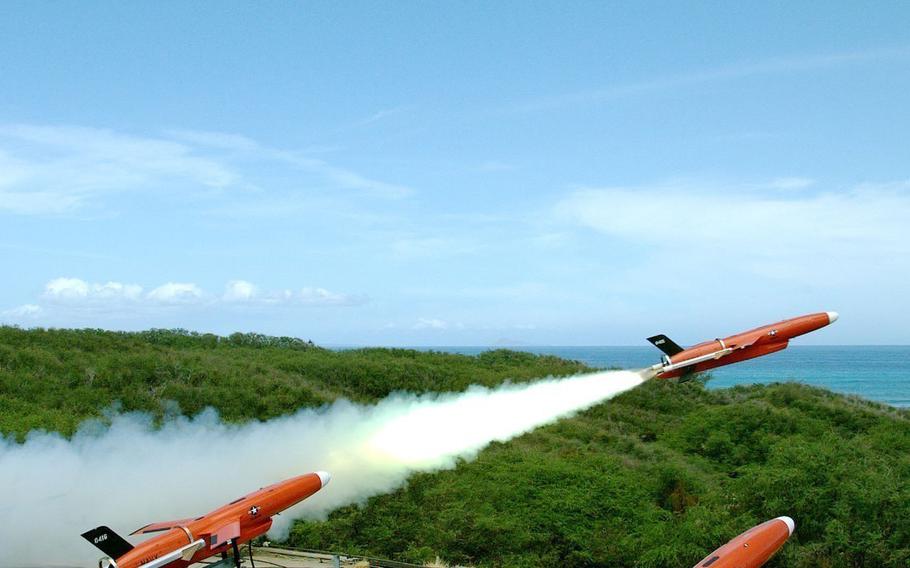
A BQM-177 naval aerial target launches from the Pacific Missile Range Facility in Kauai, Hawaii, July 14, 2022, during the Rim of the Pacific exercise. (U.S. Navy)
NASA and the U.S. Navy are seeking public comment on a draft environmental impact statement that proposes their continued use of state land for a missile range and observatory on Kauai island in Hawaii.
The Navy proposes to retain 8,172 acres of state land on Kauai for training, testing and operations at the Pacific Missile Range Facility, according to the 428-page draft issued Friday. The statement’s appendix spans more than 3,000 pages.
“Navy use of these state lands is required to maintain technological and safety capabilities supporting [missile range] training and testing,” the Navy said in a Friday news release.
Navy training and testing operations do not take place on the state lands, which serve in part as a buffer zone abutting the installation.
NASA proposes retaining 23 acres of state land for continuing operations at the Kokee Park Geophysical Observatory.
NASA uses the observatory for measuring the Earth’s rotation, orientation in space and field of gravity. The information is central to scientific studies and navigation applications.
The Navy and NASA are considering two alternatives that would allow them to meet their operational needs.
In the first, the two would secure new lease agreements with the state for the same areas they currently hold in leaseholds and easements. There would be no change from the current footprint of state lands.
Under the second alternative, the two would acquire roughly 700 acres of leasehold land, taking fee simple title to the property. They would renew agreements for the easements in their current footprint.
The Navy’s quest to continue using state land comes as the Defense Department faces growing public skepticism in Hawaii over the military’s environmental stewardship.
A massive jet fuel spill on Oahu near Joint Base Pearl Harbor-Hickam in late 2021 forced thousands of families to temporarily relocate to hotels because of contaminated drinking water. Many were sickened by the tainted water.
The fuel leak from the Red Hill Bulk Fuel Storage Facility came after years of reassurances from the Navy that the World War II-era complex posed no risk to the environment or public health.
The Army is working toward renewing a lease for almost 20,000 acres of state land on Hawaii’s Big Island that are part of the Pohakuloa Training Area, a 132,000-acre live-fire training range.
That lease is up for renewal in 2029, but last month the state Board of Land and Natural Resources rejected the Army’s final environmental impact statement for the training area, saying it included outdated data.
Elsewhere in Hawaii, the Army is proposing to lease vastly less acreage from the state at three training areas on Oahu, forgoing leasing entirely at two sites, according to a final environmental impact statement released last month.
The Navy-NASA draft statement can be viewed at https://pmrf-kpgo-eis.com/documents/.
Comments are being taken through Aug. 7 and can be submitted through the website at pmrf-kpgo-eis.com, by email to info@pmrf-kpgo-eis.com or by mail to:
Naval Facilities Engineering Systems Command, Environmental OPHEV2, Attention: PMRF and KPGO RE EIS Project Manager, Ms. Kerry Ling, 400 Marshall Road, Building X-11, Pearl Harbor, HI 96860.